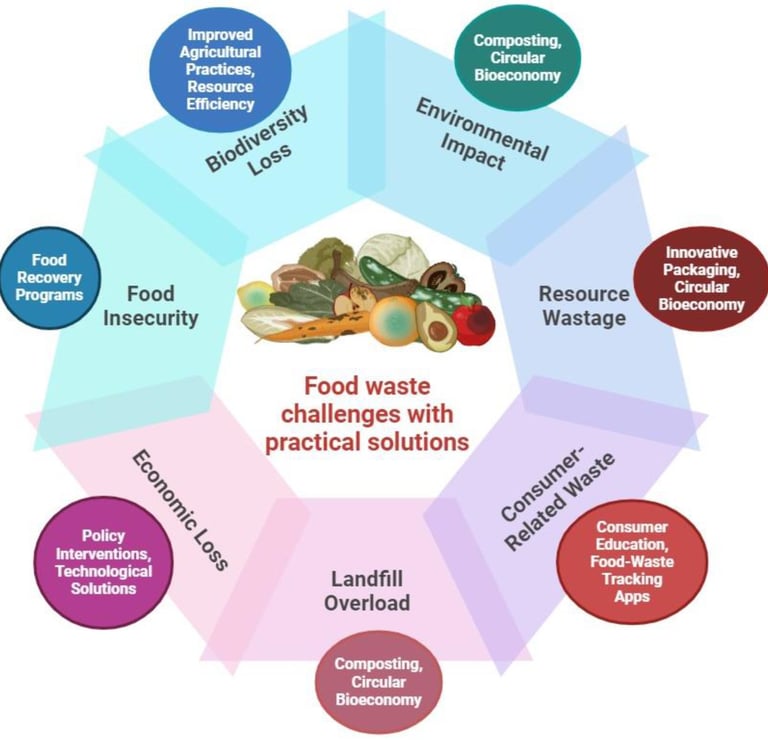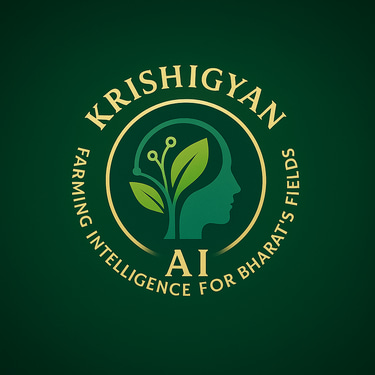Reducing Food Waste through Technology: The Indian Imperative
How Innovation is Tackling India’s Silent Food Crisis India produces enough food to feed its population—yet millions go hungry, and 40% of food is wasted between harvest and consumption. This paradox isn’t just a moral issue; it’s an economic and environmental crisis. Food waste in India occurs across the value chain—from poor harvesting practices and inadequate storage to inefficient distribution and lack of demand forecasting. The result? ₹92,000 crore in post-harvest losses annually Rising food inflation Huge environmental costs in water, land, and emissions But technology is stepping up as a powerful solution. From AI and IoT to mobile platforms and blockchain, innovation is helping India reduce food loss, optimize supply chains, and build a more sustainable food system.
HawkEye
5/19/20252 min read


Where and Why Food Waste Happens in India
Production Level
Over-ripening due to delayed harvest
Crop damage from weather or pests
Lack of demand signals to farmers
Post-Harvest & Storage
Inadequate or no cold storage
Poor transportation infrastructure
Manual handling leading to spoilage
Processing & Retail
Overstocking and unsold inventory
Poor packaging or labeling
Rejection due to cosmetic standards
Consumer Level
Excess purchasing or over-serving
Confusion over expiry vs. best-before dates
Cultural norms of wastage during festivals or weddings
Technological Solutions Making a Difference
1. Cold Chain and Smart Storage
Solar-powered cold rooms for rural areas (e.g., Ecozen, Tan90)
IoT-based temperature and humidity sensors in warehouses
Portable cold boxes for fishermen, dairy, and floriculture
These reduce spoilage during transportation and storage by keeping perishables at optimal conditions.
2. AI for Demand Forecasting
Predicts which crops to plant, when, and how much
Helps retailers and aggregators avoid overstocking
Supports dynamic pricing models based on real-time supply-demand
3. Food Redistribution Platforms
Apps connect surplus food from restaurants, events, and homes to people in need.
Cloud kitchens and CSR programs are integrating tech to track donations and ensure hygiene compliance.
4. Blockchain for Traceability
Tracks food from farm to fork
Ensures freshness, origin, and compliance
Prevents counterfeit or expired products from entering the system
This tech is especially useful in exports and processed food industries.
5. Smart Packaging & Shelf-Life Enhancers
Bio-packaging and ethylene absorbers increase shelf life of fruits and vegetables
QR codes and sensors embedded in packaging help track freshness and predict spoilage
Real-World Impact Examples
Amul has built robust cold chains for dairy with real-time monitoring to ensure product integrity.
FPOs in Maharashtra and Andhra Pradesh are using mobile cold rooms and market intelligence tools to time their harvest and dispatch better.
India’s innovation ecosystem is actively working on food waste solutions:
Agri-tech and supply chain startups backed by incubators like a-IDEA (NAARM), Villgro, and T-Hub
Government Schemes like PM Kisan Sampada Yojana, Agri Infra Fund, and Digital Agriculture Mission
CSR-led programs by large food and retail chains to donate or repurpose surplus
Additionally, the FSSAI’s “Save Food Share Food” initiative encourages hospitality and retail sectors to safely donate surplus food.
Challenges That Remain
Despite tech advancements, certain barriers persist:
Low digital adoption among small farmers and mandis
High upfront costs for cold storage and IoT systems
Fragmented supply chains with limited traceability
Need for stronger logistics in rural and tribal belts
Lack of awareness about food waste impact at consumer level
What’s Next: A Call to Action
Reducing food waste isn’t just about saving food—it’s about:
Feeding the hungry
Securing farmer incomes
Preserving water, soil, and climate resources
Lowering food inflation and increasing exports
To achieve this, India needs a tech-enabled, inclusive approach:
Scale cold chain and predictive tech in rural India
Build digital platforms for surplus redistribution
Foster public-private partnerships for food logistics
Educate consumers about mindful food usage
Conclusion
Food waste is a solvable crisis. Technology—when designed for scale, affordability, and inclusivity—can transform India’s food ecosystem into one that is efficient, equitable, and sustainable.
With the right mix of policy support, innovation, and awareness, India can lead the way in building a zero-waste, zero-hunger future.
#FoodWasteIndia #AgriTech #ColdChain #DigitalAgriculture #Sustainability #ZeroHunger #SupplyChainInnovation
